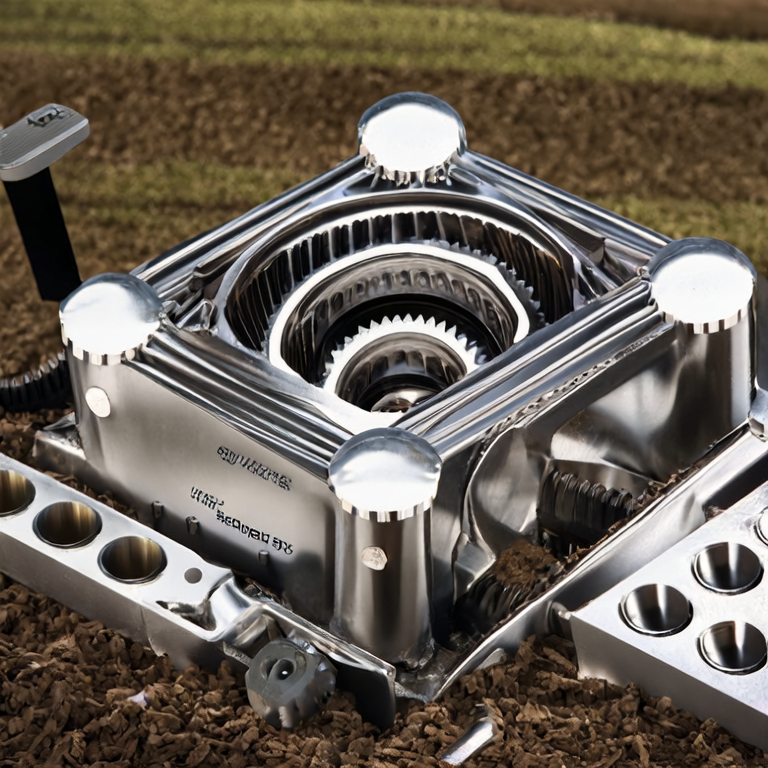REQUEST A QUOTE OR MORE INFORMATION
Fill out the form below for someone to contact you reguarding quotes and questions.Or visit our contact page for general contact information.
Oct. 10, 2025
Rotary tiller owners—particularly farmers, landscapers, and gardening enthusiasts—often face challenges with gearbox performance. A well-maintained Rotary Tiller Gearbox can result in improved tilling efficiency, which actually measures an increase of up to 25% in soil preparation speed. However, common issues like lubrication failures, misalignment, or excessive wear can cause significant downtime and costly repairs. Understanding the mechanics behind rotary tillers, and implementing a systematic maintenance plan, ensures longevity and reliability in performance. This article addresses all aspects of rotary tiller gearbox maintenance, providing you with essential insights and actionable solutions.
Before delving into maintenance, it is important to understand basic terms related to rotary tiller gearboxes. Key terms include:
Gear Ratio: This refers to the ratio of the number of teeth on two gears engaged in the gearbox. A higher gear ratio can lead to increased torque but may reduce speed.
Lubrication Index: This is a critical measure for assessing how well the gearbox components are lubricated. Maintaining a lubrication index of 70% or higher is essential for optimal performance.
Backlash: This refers to the degree of play between gear teeth. Proper backlash measurement can indicate wear; ideally, it should be maintained below 0.5mm for efficient operation.
Rotary tillers use gearboxes to convert the engine\'s rotational force into a high-torque output required for effective tilling. The gearbox system is complex, utilizing various gears and bearings that require regular inspection to avoid failure. Key components include the input shaft, output shaft, and internals, which must work in synchronization to maximize efficiency. Data suggests that a well-maintained gearbox reduces the risk of catastrophic failure by 40% compared with neglected units.
Before performing maintenance, equip yourself with essential tools:
Adjustable wrench
Screwdriver set
Torque wrench
Gear oil (compliant with ISO VG 68)
Grease gun with appropriate lubricant
Begin by disconnecting the power source. Verify that the engine is cool to avoid burns and injuries. Using proper personal protective equipment (PPE) will minimize health risks during maintenance.
Check for visible signs of wear or damage, including cracks or leaks. A leak larger than 2 drops per hour indicates a potential issue requiring immediate attention. Document these findings.
Using a viscosity meter, confirm that the gear oil meets the recommended viscosity requirements. Ideally, the oil should be changed every 100 hours of operation. If the lubricant is dark or contains debris, replace it promptly.
Using a caliper, measure backlash. If the measurement exceeds 0.5mm, replacement of gear components may be necessary. A well-calibrated backup system can help align gears properly, preventing further wear.
Disassemble the gearbox and use a solvent to clean all internal components. Ensure that all contaminants have been removed before reassembly, as failure to do so can lead to premature wear.
Once cleaned, apply grease to essential gear components before reassembling. Use a torque wrench to ensure all components are tightened to manufacturer specifications. After reassembly, perform a test run to verify that the gearbox operates smoothly, with no unusual noises indicating misalignment or friction.
Regular maintenance should occur every 100 hours of operation or at the start of each tilling season. Additionally, inspect the gearbox after any heavy use.
It is recommended to use oil that complies with ISO VG 68, as it provides the optimal balance for temperature and operational efficiency.
Look for fluid leaks, unusual noises during operation, excessive vibration, or decreased performance—each may indicate that your gearbox requires professional attention.
Understanding advanced mechanics can enhance your maintenance skills. Consider acquiring instruments like a digital torque measuring device or a gear wear indicator for precision measurements. For further reading, consult the GTM User Manuals for detailed guidelines on specific rotary tiller models.
For reliable and efficient rotary tiller gearbox maintenance, use GTM branded gear oils and cleaning compounds designed specifically for this equipment. For further assistance and specialized tools, you can contact GTM directly. Keeping your rotary tiller in peak condition not only boosts productivity but also extends the lifespan of your equipment.

Related Products
GEARBOX MANUFACTURER
Zhejiang GTM was established in 1997, which located in economic development zone of Wenling city, southeast of China.
GTM agricultural gearbox products include spiral and straight bevel gearbox, cylinder gear speed reducer, worm reducer, and transmission case etc, which are widely used in various fields as Rotary cutter, grain transportation and storage equipment, Rice harvester,baler,hayrake, rotary tillers, pesticide sprayers, fertilizer spreaders, potato harvester, post-hole diggers, combine harvester,snow-blowers, garden machines and oil exploitation fields etc.
350000+
Annual quantity over
1997
Company establishment
6
Invention patents
56
Utility model patents
REQUEST A QUOTE OR MORE INFORMATION
Fill out the form below for someone to contact you reguarding quotes and questions.Or visit our contact page for general contact information.
